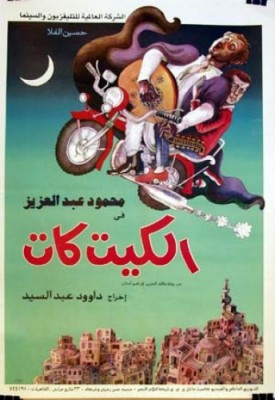
Martin Scorsese's World Cinema Fund recently helped restore the 1969 classic المومياء\ ليله ان تحصی السنين ("The Night of Counting the Years/The Mummy") by Shady Abdel-Salam, and the film was shown at the Doha Tribeca Film Festival and, last night, at the Cairo International Film Festival. (Apparently, Scorsese
saw "a completely pink" 16 millimeter version of the film, in 1976, at a home screening, and never forgot it.)
The film is based on the true story of the discovery of an incredible cache of Pharaonic mummies, in the late 19th century, in the mountains near Luxor. The cache had been found by a local tribe, who kept its location secret and slowly sold its contents on the black market. But the authorities discovered the cave, and transferred its contents to the Egyptian Museum, where they are today. Framed by these true events, the film tells the story of two brothers, sons of the tribe's dead chief, facing their inheritance.
The film is famously beautiful. Abdel-Salam paid great attention to costumes and scenery, and he used the Pharaonic temples in Luxor, the desert, the Nile river, the tribesmen and women and in their flowing black garments and the soldiers in their bright red tarboushes, to compose shot after breath-taking shot. The pace is slow, solemn, dream-like. The dialogue is all in Formal Arabic, much of it is close to prose poetry--and it's declaimed like poetry. A friend I saw the film with compared it to Greek tragedy.
The film raises the question of nationalism versus tribalism, of historical identity, and of how one lives with and what one makes of the past. None of this is resolved neatly: the final scene, which is truly stunning, shows the young tribal chief--who has made the "right" decision and handed over his tribe's pilfered patrimony to the state's modern, knowledge-seeking archeologists--in a state of evident pain, loss and fear.
It's a very slow film, and the acting can seem stilted. But the deliberate pace allows images to grow unforgettable, and the film's solemnity is what gives the story its power, its aura of legend.



